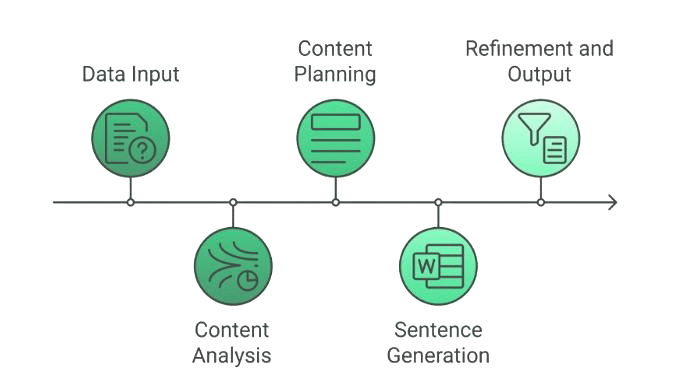Natural language generation, abbreviated as NLG, is a core part of many AI technologies, particularly generative AI. NLG is being used across countless fields, helping teams work smarter and quicker.
NLG relies on software to generate written or spoken language in response to a prompt or command. Think of how we use chatbots to get information from a customer service department or how technologies let us translate content in real time.
In this blog post, we’ll go into more detail on how NLG works, including the steps involved, its benefits for businesses, applications and use cases, and more.
What Is Natural Language Generation?
Natural language generation is a software process that uses AI to produce written or spoken natural language from a data set. NLG can use structured or unstructured data for this process.
Many technologies like voice assistants, writing tools, and chatbots rely on NLG to create human-sounding text. NLG is what allows computers to interact with humans in a language they can understand. As an example, a computer can analyze data from a customer input, like a question to a voice assistant, and respond in a way that is understandable to humans rather than computers.
How Does Natural Language Generation Work?
While it may seem simple enough to ask Siri what the weather is and get a natural language response back, there’s a lot that goes on behind the scenes to make this possible. There are a few different AI technologies at play here that work together to produce human-sounding speech or text.
Language models
As the core engine behind NLG, a language model is trained on huge quantities of data to be able to generate coherent and contextually relevant responses. These models are trained to predict the next word in a sequence based on patterns learned from training data.
Natural language processing (NLP)
Natural language processing is the broader field that covers various AI-driven techniques for understanding and generating human language. NLP is responsible for tasks like tokenization, part-of-speech tagging, and sentiment analysis, all of which help a system understand a user’s prompts and commands.
Natural language understanding (NLU)
Natural language understanding focuses on comprehending a user’s input by analyzing syntax, semantics, and intent within language. NLU helps an AI correctly interpret a question or command before generating an appropriate response so that outputs are relevant and accurate.

A Step-by-step Look at Natural Language Generation
To get a better idea of how the technologies above work in real-time natural language generation, here’s a brief breakdown of the step-by-step process that happens behind the scenes:
- Data input: An NLG system receives data in the form of a question, prompt, command, data entry, or something that is either structured or unstructured
- Content analysis: The system then filters through the input’s content and begins to break down the data by identifying different parts of speech or text
- Content planning: After beginning to analyze the input with NLP, the NLG system will make a series of choices on how the response will be structured using NLU to decipher the meaning of the input
- Sentence generation: The system starts putting together sentences to summarize the topic and provide a response to the initial prompt by choosing specific words, sentence structures, and phrases
- Refinement and output: Finally, the NLG system may refine the text to make sure it’s clear and sounds natural before producing a final output that’s easily understandable to humans
Real-world Applications of Natural Language Generation Technology
Natural language generation tools and apps are being used by everyone, from students to CEOs. Generative pre-trained transformer (GPT) platforms like ChatGPT are making NLG technologies more accessible to anyone, whether or not they have any technical skills. This shows us just how versatile natural language AI technology is and how many different applications it has in our daily lives. Here’s a closer look at some of the ways NLG is being used today for different purposes.
- Chatbots and virtual assistants: Conversational AI systems like chatbots and virtual assistants answer user questions, either for personal use like Siri and Alexa or in customer service scenarios where AI agents help customers track orders and solve problems
- Smart automation: Many businesses are using NLG technologies to automate workflows and reporting systems as it’s able to turn complex raw data into meaningful outputs
- Content creation: Marketing teams can turn to NLG to create content from text to images and even ads, making it easier to create a large volume of content with limited resources
- Financial analysis: Financial, banking, and insurance companies are set to lead the market in NLG technology use, as finance teams can use NLG to discover meaning in numbers and find patterns in numerical data that reveal investment and market trends
- Personalization: Users can get highly personalized content recommendations with NGL systems, making them ideal for everything from music and media systems to the tourism and hospitality industry
- Translation: NLG makes it simple to get real-time translations of content like documents, websites, and even lectures or conversations and can also be applied in fields like tourism or education

Benefits of Natural Language Generation for Businesses
In 2023, the NLG market size was valued at USD 655.3 million. By 2030, it’s projected to grow at a CAGR of 21.8% and become an integral part of business intelligence (BI) processes. Natural Language Generation isn’t only about making AI sound human; it’s a game-changer for businesses looking to automate content, improve customer interactions, and make data more accessible. Here’s how it helps:
- Speeds up content creation: Whether it’s generating sales reports, product descriptions, or emails, NLG helps businesses churn out text quickly, reducing time and effort spent on manual, repetitive tasks
- Enhances customer service: Chatbots and virtual assistants can provide instant, human-like responses, improving customer relationships by providing quick responses while reducing the need for human support agents
- Turns data into insights: Instead of sifting through endless spreadsheets, businesses can use NLG to generate clear, easy-to-understand summaries and reports from complex data
- Boosts personalization: NLG can tailor messages for customers based on their preferences, behavior, or past interactions, improving customer engagement and loyalty
- Reduces costs: Automating text generation means companies can cut down on manual work, freeing up employees for more strategic and creative tasks
Natural Language Generation Challenges and Considerations
Natural language generation is powerful, but it’s not perfect. Like any emerging technology, it comes with its own challenges. While these challenges shouldn’t prevent you from adopting advanced natural language generation systems, they’re definitely something to take into consideration when planning implementation strategies.
- Short and repetitive content: AI models can get stuck in loops and repeat phrases or ideas with a little bit of paraphrasing, making content feel robotic and generic rather than natural
- Context understanding: Sometimes, NLG systems may struggle to understand complex content and generate a response that doesn’t fully grasp the nuance of a topic
- Language ambiguity: The language we speak is full of subtleties, slang, and double meanings, and if not properly trained on human language, NLG can misinterpret ambiguous phrases and provide responses that don’t totally make sense
- Quality assurance: AI doesn’t always hit the mark, and businesses still need human-led quality assurance to catch mistakes, fine-tune language models, and make sure that NLG-produced content is accurate and aligns with quality standards
- Ethical considerations: Data bias in training data and misinformation is a concern with AI generation systems, and the consequences can be serious if not caught in advance, which is why it’s so important for companies to adopt responsible AI usage standards
Natural Language Generation AI: Powering Processes Across Industries
NLG has already become an integral part of our daily lives and work processes. With countless industries adopting NLG technologies, whether it’s manufacturing, education, logistics, or customer service, these systems are here to make our work simpler and smarter.
Speech AI technologies like aiOla rely on natural language generation systems to empower frontline workers to bridge speech, text, and data in one seamless workflow. By collecting essential data and automating workflows through speech, aiOla is helping businesses access enterprise-grade conversational AI to save time, cut down on costs, and optimize productivity.
Book a free demo with one of our experts to learn more about how aiOla can help teams harness the power of NLG.


